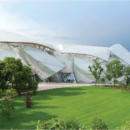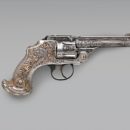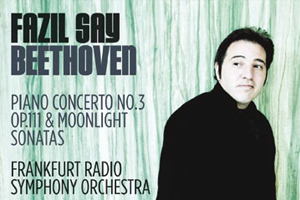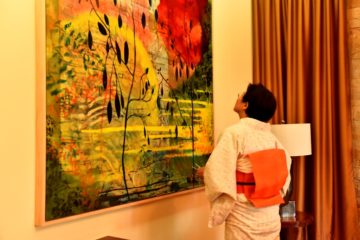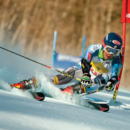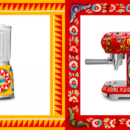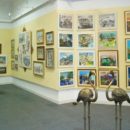
In-house art. Bucharest`s alternative spaces
In Bucharest, art is hiding away. Despite the fact that some colored and lively urban interventions are often encountered, if one wants to find true contemporary art he or she must search and be in the know, must be guided by someone informed, must be active on the channels of communication; and the pleasant surprises will live up to the expectations. In this article, I shall present the most active alternative spaces that promote contemporary art in Bucharest.
Ota (26, Dr. Staicovici street) is the oldest “headquarter” of the creative people from all fields (starting with visual arts to dance and advertising), gathered around the famous soup served on Wednesdays and Thursdays. Octavian (Ota) prepares the soup since 2003, more than ten years now, while also finding novel recipes – from Bavaria to Uzbekistan (making short stops in Mexico and Thailand), that have become legends over the years. Ota is not only famous for the soups, but also for the extraordinary open attitude towards young artists. He has transformed his living room and his office in a contemporary art gallery (Galeria 26). This gallery (or, more accurately called a project space) is functional since 2006, and in the 8 years of activity it has hosted exhibitions for some important artists; some of them were at their first appearance. Of the curators and artists who are active in Galeria 26, I mention Adrian Bojenoiu, Nicolae Comănescu, Alexandru Davidian, Simona Vilău, Lea Rasovszky, Adrian Popescu, Mihail Coșulețu, Iulia Nistor, Florin Pantilimon etc.
Another lively space where art, design, architecture and music events take place is Carol 53 (of course on 53, Carol Boulevard). The building was built at the beginning of the 20th century and has a troubled history – it was confiscated by the Communists and transformed in a Union Culture House and then into a residential building (nationalized house) until the 90s when it was given back to the owner. Since 2012, it functions as an alternative space for art, design and urban culture.
On 107, Victoriei Road there is the impressive Știrbei Palace (the palace with caryatides), built by the architect Michel Sanjouand. It belonged to the Știrbei family until 1948, when it was confiscated by the state. Starting with 1954, the palace was the house of the Popular Art Museum and between 1982 and 1990 – the Museum of Ceramics and Glasswork.
In the recent years, the generous halls of the palace – but also the basement and the courtyards – have hosted some flagship contemporary art and design events – from the exhibitions of some known artists, such as Roman Tolici to Bucharest Design Week. In the backyard, there is Club Eden, a very populated and semi-savage place, with hammock chairs and tables hidden between weeds and bushes, right in the middle of the country`s capital city.
The Ciclop Garage, located on Magheru Boulevard, has hosted some events with temporary interventions – graffiti and wall painting, made by trendy street artists. Without being constant, the Ciclop space is included on the map of alternative art hot spots.
Calup is a project that regenerates the urban space by creating pop-up events in various locations; so far they`ve been active on 10, Caimatei Street and on 25, Thomas Masaryk with a series of actions meant to capitalize the beauty and the novelty of the buildings that were unknown to the public at large until that point. The most daring ongoing project of this group is CaziNou, an initiative to re-enliven the superb Casino building of Constanța. The artists who have collaborated with Calup so far are Lea Rasovszky, Mario Orlando, Claudiu Chihăescu, Adrian Popescu, Adrian Preda, Radu Burduj, Andreea Novac and so on.
Casa de pe chei (The House on the Canyon) on 197, Splaiul Unirii, is a place for creative people of all kinds; it was open in the summer of 2013, close to the Atelierul de Producție (Production Workshop). The place hosts all sorts of events, from live music to design and art exhibitions. The house is the initiative of Artwe, supported by 441 Design Studio.
Home Mătăsari (17, Mătăsari Street), a space launched in 2011, hosts the festival called “Femei pe Mătăsari”, (Women on Mătăsari) – already at its fourth edition – and many other cultural activities meant to reinvigorate this semi-central area of the city.
Plastilina (8, Olari Street) is an artsy coffee shop and a pop-up gallery, recently opened in May 2014 at the crossroad of Carol with Moșilor Road. The marquis house was built in 1893 and has already hosted events such as Bookmaroc or Pepenăria.
Oxigen Hall (2, Sergent Nuțu Ion Street) is hosting, now and then, a night for visual arts and music in the Rahova neighborhood, the Sebastian area. Located in the Recom factory courtyard, the Oxygen was the idea of artists Alexandru Rădvan and David Șandor, who wanted to bring art in the middle of ordinary people and invite young and mature artists to organize their exhibitions together. The events have started in 2012.
We made a review of some of the spaces which are still active in the total independent, total experimental, almost no budget artistic area. These are the initiatives of some people who were not happy with the status quo and preferred to take on the role of building and consolidating some new areas of interest and of helping some talented people develop. Without having these opportunities, these talents would not have been visible so soon. Culture needs such initiatives, and the more there are, the greater the opportunities of young people to make a name for themselves in the elitist and exclusivist area of contemporary art.


